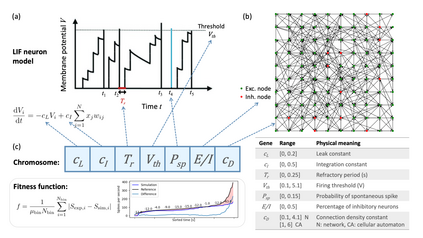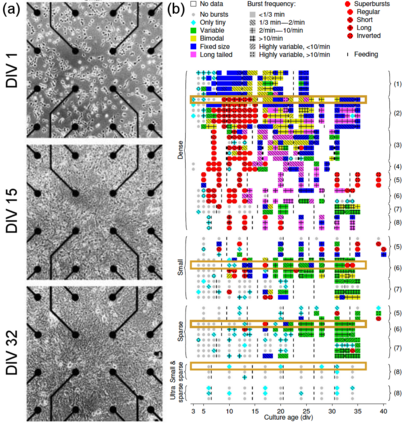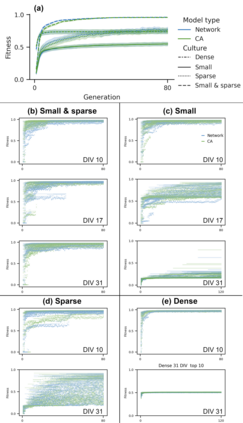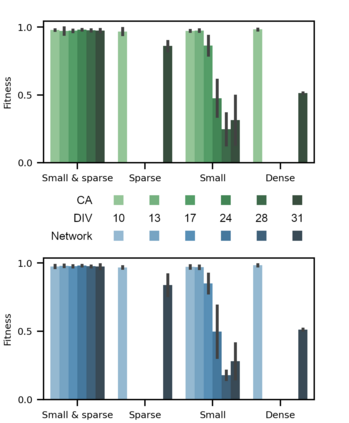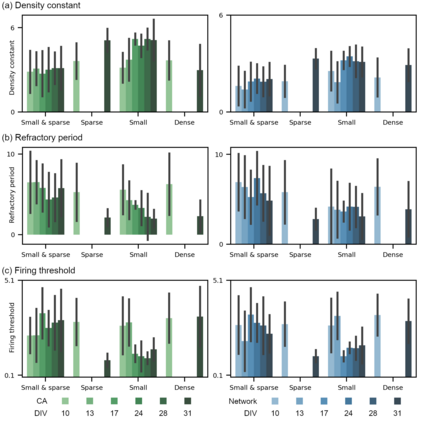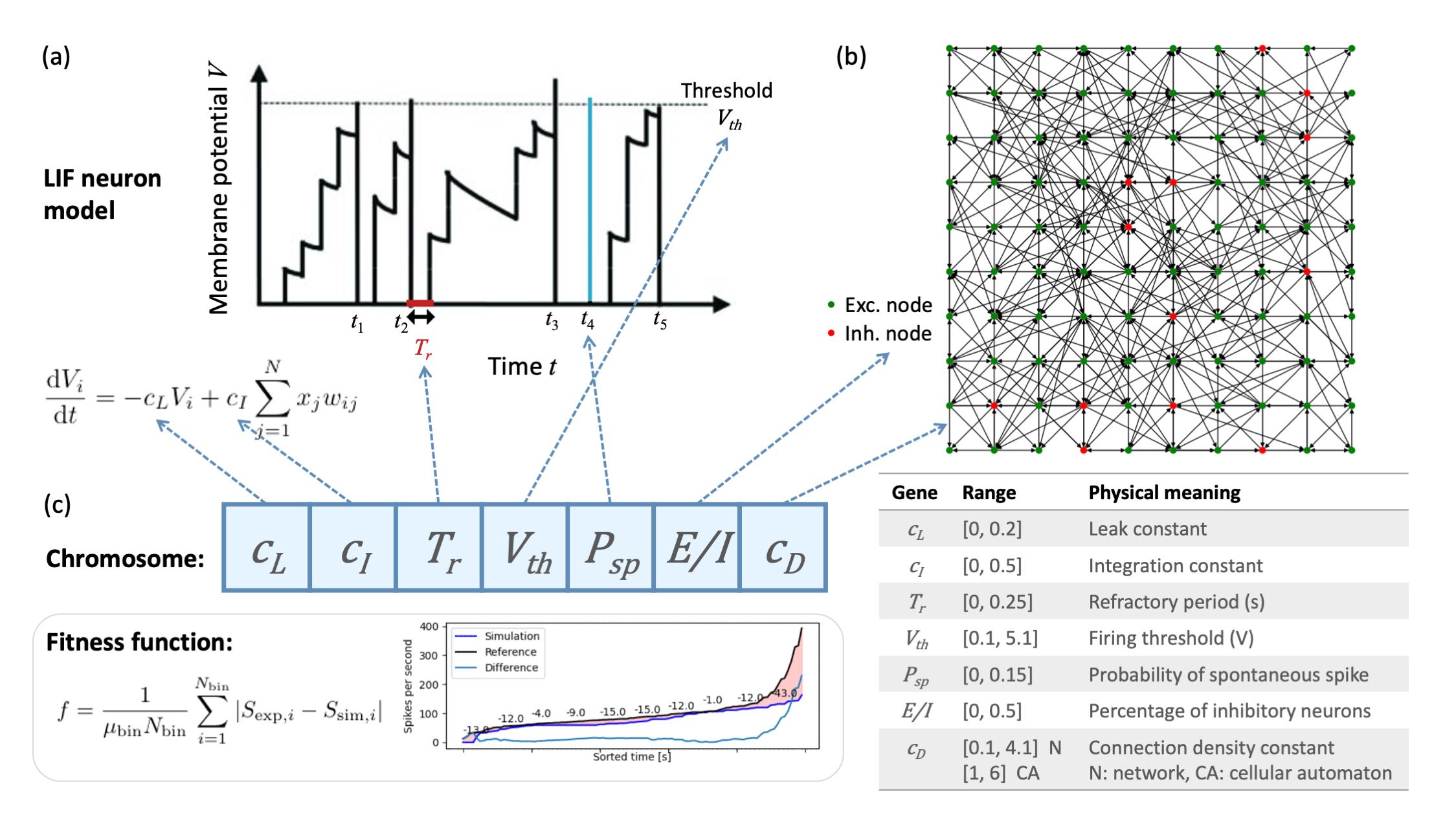Neuro-inspired models and systems have great potential for applications in unconventional computing. Often, the mechanisms of biological neurons are modeled or mimicked in simulated or physical systems in an attempt to harness some of the computational power of the brain. However, the biological mechanisms at play in neural systems are complicated and challenging to capture and engineer; thus, it can be simpler to turn to a data-driven approach to transfer features of neural behavior to artificial substrates. In the present study, we used an evolutionary algorithm (EA) to produce spiking neural systems that emulate the patterns of behavior of biological neurons in vitro. The aim of this approach was to develop a method of producing models capable of exhibiting complex behavior that may be suitable for use as computational substrates. Our models were able to produce a level of network-wide synchrony and showed a range of behaviors depending on the target data used for their evolution, which was from a range of neuronal culture densities and maturities. The genomes of the top-performing models indicate the excitability and density of connections in the model play an important role in determining the complexity of the produced activity.
翻译:受神经启发的模型和系统在非常规计算中有着巨大的应用潜力。 生物神经元的机制往往在模拟或物理系统中模拟或模仿,试图利用大脑的一些计算能力。 然而,神经系统中的生物机制复杂,难以捕捉和工程;因此,转向由数据驱动的方法将神经行为特征转换为人工基体,可能比较简单。在目前的研究中,我们使用进化算法(EA)来产生神经系统,模仿体外生物神经学行为模式。这一方法的目的是开发一种能够展示复杂行为的模型的方法,这些模型可能适合用作计算基体。我们的模型能够产生网络范围的同步水平,并显示一系列取决于其进化目标数据的行为,这些数据来自一系列神经文化密度和成熟度。 最高级表现模型的基因组显示了模型中关联的易变性和密度,在确定所制作活动的复杂性方面发挥了重要的作用。

